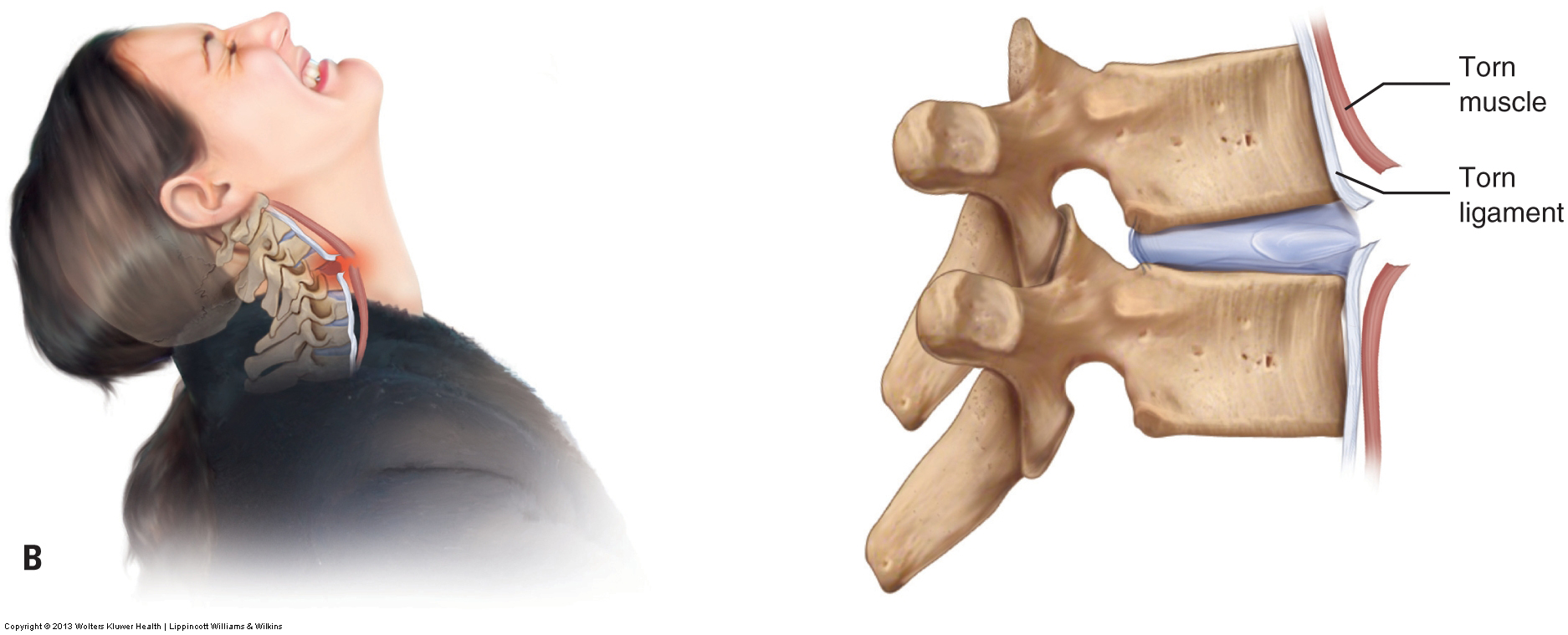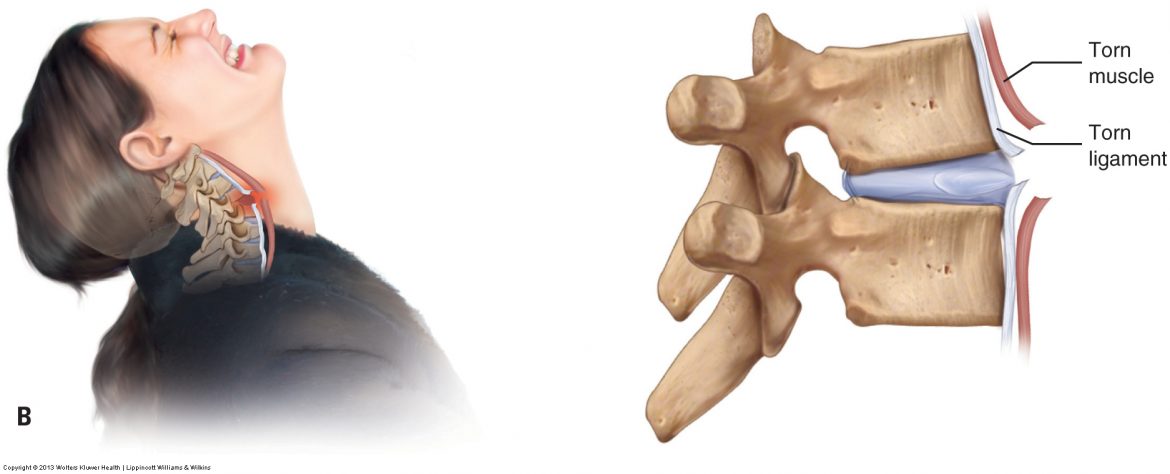Whiplash – Introduction
Whiplash is the name given to an injury to the neck in which it is forcefully thrown in one direction and then forcefully thrown in the opposite direction, similar to how a whip lashes. Whiplashes are typically associated with automobile accidents. Because the neck motion that occurs during a whiplash accident is excessive, soft tissues can be overstretched and torn, resulting in strain of musculature and/or sprain of fascial ligamentous tissue.

Whiplash into extension tearing anterior myofascial tissues. Permission: Joseph E. Muscolino. Advanced Treatment Techniques for the Manual Therapist: Neck (2013).
Whiplashes are often termed hyperflexion-hyperextension injuries because the impact often occurs within the sagittal plane from the front so that the neck moves first into excessive (hyper) flexion and then into excessive (hyper) extension. For example, if a person is driving a car and hits another car in front, the car and the driver’s body that is restrained by the seat belt will decelerate or stop, but the client’s/patient’s head and neck will continue to travel forward into hyperflexion; at the end of the flexion motion, the neck will lash back into hyperextension. But if the impact is from behind, in other words the person is rear-ended, the car and the person’s body will be pushed forward underneath their neck; relatively their neck will move into hyperextension and then lash back into hyperflexion. If the impact occurs from the side in the frontal plane, the movement would be hyper lateral flexion to one side and then hyper lateral flexion to the other side. And if the impact occurs toward the front-side or back-side of the car, the car would be pushed into a spin and hyper rotations would occur with the transverse plane. Certainly, if the impact occurs at an oblique angle, the motions will be within an oblique plane combining components of the sagittal, frontal, and transverse plane motions.
The importance of understanding the mechanics of the impact is that it can point us toward which structures are more likely to be injured, aiding our diagnosis/assessment and therefore our treatment.
Causes
Whiplashes are usually associated with automobile accidents, but can occur during other activities such as playing sports or from a slip and fall. Mechanically, what is necessary for a whiplash to occur is an impact (macrotrauma) that causes a sudden and excessive motion of the person’s neck in one direction and then into the reverse direction. The excessive motion overstretches and can tear the soft tissue on the “opposite side” of the joint. For example, when the person’s neck is thrown anteriorly into flexion, the posterior tissues at the back of the neck can be overstretched and torn; and when the person’s neck is thrown posteriorly into extension, the anterior tissues at the front of the neck can be overstretched and torn. Tearing of muscular tissue is termed a strain; tearing of ligamentous/joint capsule/fascial tissue is termed a sprain. Therefore, a whiplash is essentially a strain/sprain of the neck. The reason that cars have headrests is to prevent hyperextension of the neck.
The excessive motion of a whiplash can also cause compression upon the spinal nerves within the intervertebral foramina. This can cause swelling, which can cause pain and further compression upon the nerves. If the annulus fibrosus fibers of a disc are injured, a disc bulge or herniation can also occur. Even if the soft tissue is not mechanically torn, sudden overstretching can initiate a muscle spindle (myotactic) stretch reflex that results in spasming of the musculature. Therefore, the headrest in a car may prevent hyperextension and tearing of soft tissue, but it does not prevent the sudden movement of the neck that can trigger a muscle spindle reflex with its concomitant spasming. Bone can also be injured during a whiplash accident. If the vertebrae of the neck are moved far enough, the margins of the bones can approximate each other, resulting in a bone bruise or possibly a fracture.


